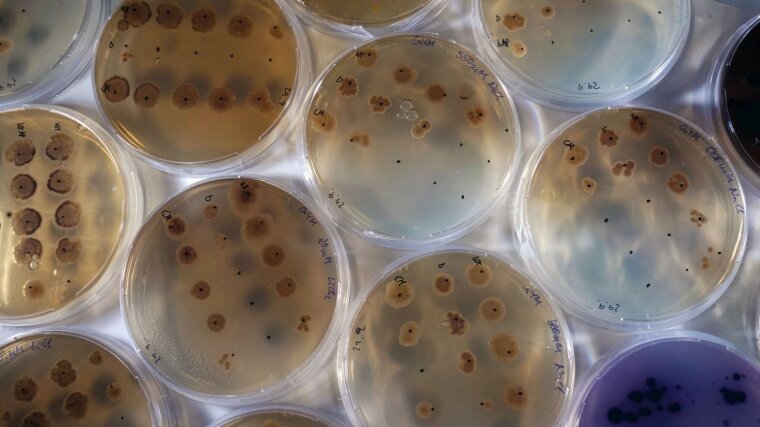
Microbes interact in highly complex organismic associations through the continuous exchange of chemical signals. These signals are often, but not solely, low molecular weight compounds produced by one partner and taken up and decoded by another (e.g. as attractant or repellent, as a pheromone for induction of sexual development in fungi, for quorum sensing in biofilm generation, for parasitic or mutually beneficial symbioses etc.). Chemical communication thus is the basis for the generation of homo- or heterogenic organismic interactions, e.g. with plants in the rhizo- or phyllosphere, with animals or man, or in multitrophic consortia in soil. Therefore, it is essential to unravel communication processes at the cellular level in detail which is possible using microbes as model systems. The spatial and temporal distribution of interacting networks will provide insight into microbial consortia and their interactive networks which will lead to applications, e.g., in nature conservancy (by elimination of contaminants), in agriculture (to improve yield and allow for higher stress tolerance), in medicine (biosynthesis of antiinfectives) or for biotechnological applications (like using quorum sensing in production of natural compounds for pharmacy of nutrition), just to name a few.
Jena is one of Germany’s leading places in microbiology. The high number of groups working on subjects related to the topic of microbial communication has allowed the competitive acquisition of three research training programs. FSU together with extra-university institutiones founded the Jena School for Microbial Communication (JSMC) as an “umbrella” organisation. JSMC currently comprises three Research Training Groups, two of these are international PhD programs. JSMC has managed to become a highly attractive graduate school for PhD training with international reputation. It coordinates teaching and ensures excellent training in high quality research laboratories, furthers motivation, and actively encourages integration and interdisciplinary exchange between students and young researchers from different backgrounds. JSMC also fosters educational and scientific interaction between university and non-university institutions. The teaching and science platform includes three different aspects of microbial communication: interactions between microbes, interactions with plants and animals, and interactions with the environment.
Aim of the graduate school is the education of interdisciplinarily trained, competitve researchers for both basic and applied sciences. To aid the latter side, biotech companies are associated with the three founding research training groups thus providing one of two singular characteristics for the situation in Jena: close cooperation with many non-university research institutes as well as cooperation with biotech companies which were initially founded based on developments within the research facilities and which still have close personal relations to their former institutions. In Jena, this collaboration is not only visible in research, but also through involvement of all non-university research institutions and most of the associated biotech companies in teaching. To our knowledge, this is unique for the German scientific community.
The „Jena School for Microbial Communication“ is a pilot project within the Graduate Academy for PhD in Natural Sciences. It allows for structurally innovative interfaculty education within a scope of a focussed subject which will enhance international visibility of the school. It offers outstanding opportunities for the students and will also provide scientists for the local biotech scene. The JSMC is based on consecutive B.Sc./M.Sc. programs and includes mandatory exchange with international or industrial partners. Equal opportunities are especially enforced including child-care above the level of the still excellent basic network for infants, toddlers and school children from 8 weeks to 10 years in Eastern Germany.